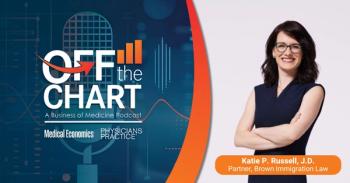
The Top Ten Changes in Patient Expectations for 2013
Patient expectations have changed little in the past 15 months, but patient intensity has.
Last year marked the first assessment of changing patient expectations. We thought that it would be a good idea to see what, if anything, has changed.
Nothing gets knocked off of the list, but the intensity of patient expectations, thanks to ever higher deductibles and co-pays, has increased proportionately.
Here’s the 2012 and 2013 list in reverse order:
Expectation #10: New and better drugs. Patients are exposed new drugs claiming to treat everything from chronic pain to restless leg syndrome. So, they expect something to be available to treat them. The reality of medicine is different, and how you relate to and communicate with your patients is key. “No, because,” to demanding patients is the new mantra.
Expectation #9: Portable medical records. EHRs are data repositories. Making patient records out of them is another thing altogether. There are few solutions. MDclick’s patient portal is among the best, and, it provides excellent chronic disease stratification and population management capabilities.
Expectation #8: Accessibility. After-hours recordings to call 911, go to an emergency room, or wait until office hours is a horrible strategy. Forwarding the main office number to a dedicated cell phone and rotating staffers to be on call after hours and weekends is a simple, effective, and personal touch solution.
Expectation #7: Communication. Being proactive by using secure e-mail, Web applications, and texting to educate, inform, and respond to patients, and book and confirm appointments, is key to patient retention, patient referrals, and a more efficient operation. A relatively small investment in experienced professionals to prepare the system yields big gains in revenue and reduced costs.
Expectation #6: Personalized medicine. People expect (demand) customized treatment, better results, and fewer side effects. Keeping up with the latest technology, and being able to explain why it is not available or why you do not recommend it for that patient, is increasingly important.
Expectation #5: Better coordinated care. Higher deductibles and copays have created millions of under-insured and uninsured people, making patients acutely aware of the cost of care. Patients expect their providers to coordinate their care not only for convenience, but to keep the costs down without compromising safety or outcomes.
Expectation #4: More outpatient procedures. Most people cannot afford long recovery times or hospitalizations unless there is no other choice. With more and more procedures and surgeries moving to outpatient settings, working with one or two ambulatory surgery centers under specially negotiated pricing is a near necessity. A single continuity-of-care structure from diagnosis to recovery holds strong attraction to today’s patients.
Expectation #3: New alternatives to pay for care. Most everybody is effectively self-insured to one extent or another. With reimbursement going from volume to value, providing a range of the same commercially available personal financing options dentists and cosmetic surgeons do is smart business and better care.
Expectation #2: Customer service, technology, and outcomes. Three fundamental systemic changes - access to information, expectation of quality service, and quality care, and the patient perception that technology has evened the playing field, making skill less of a factor - have taken permanent root. People rarely look for credentials. They look for a solution, and, their search is easier than ever. Change your website from an electronic brochure to an interactive, integrated component of your practice. Doing this is a key element in transitioning from volume to value.
Expectation # 1: Access to Care. The primary decision metric for most patients is access to care. Waiting in line may enhance the guest experience for Disney, but waiting to be seen when you are sick and scared, whether it is for an appointment or in the waiting room, complicates patient experience on numerous levels including clinically. Meeting patient expectations is more than accommodation, it is risk management (happy patients do not sue), improved clinical care (good patient experiences lead to better outlooks, outcomes, an enhanced sense of security and wellbeing) and good business.
Meeting patient expectations is a practical reality, and the sooner steps are taken, the better your business outlook.
Newsletter
Optimize your practice with the Physicians Practice newsletter, offering management pearls, leadership tips, and business strategies tailored for practice administrators and physicians of any specialty.









